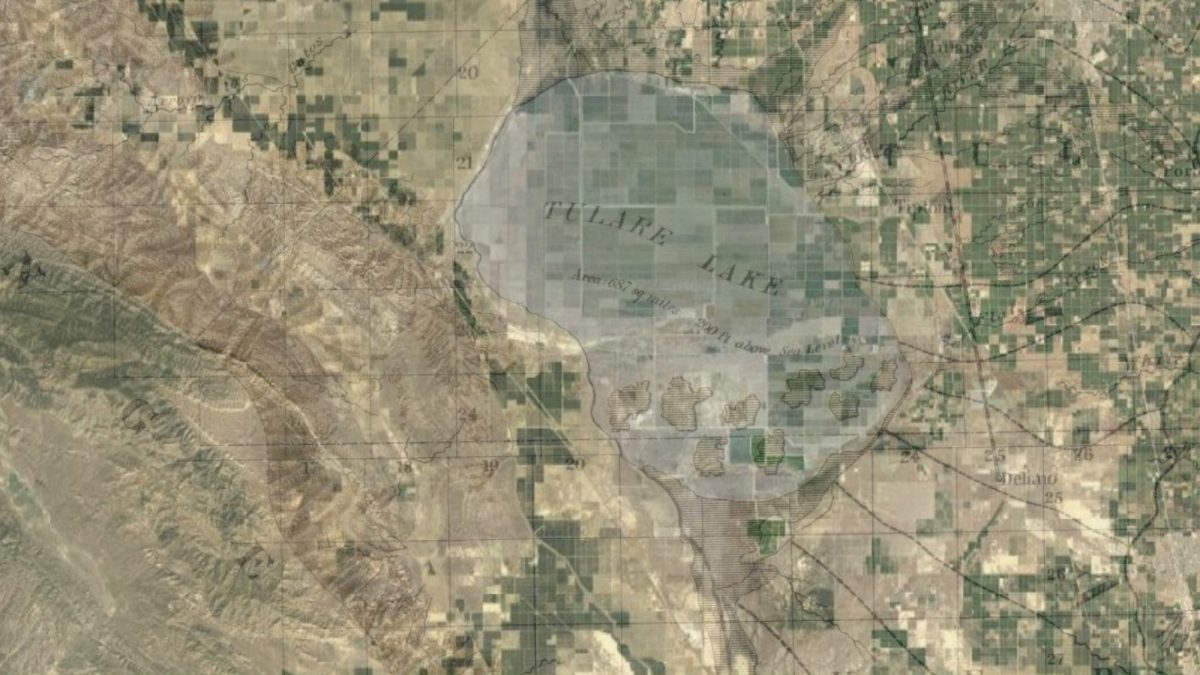There Should be Wetlands Here
{18 minutes}
There Should be Wetlands Here
A tribute to the ghost of Tulare lake
In Kat Anderson’s brilliant and scholarly mediation on the Indigenous tending of place in California, Tending the Wild: Native American Knowledge and the Management of California’s Natural Resources, she speaks at great length about the original beauty of the Tulare Lake region, and the wetlands that covered the southern part of the San Joaquin valley.
Prior to its decimation at the turn of the 20th century, Tulare Lake was the largest freshwater lake west of the Mississippi (after the disappearance of Lake Cahuilla sometime after 1580). Fed by the Kern, Tule, and Kaweah rivers, as well as southern distributaries of the Kings river, it ranged from about 500 to 700 square miles, fluctuating annually with rainfall and snowmelt.
An area of immense ecological abundance, the lake was named after the tule rushes that lined the marshes and sloughs of its shores. Situated centrally on the Pacific flyway, the lake and its surrounding marshes and wetlands that stretched for hundreds of miles hosted epic migrations of millions upon millions of birds.
For millenia the Tachi tribe, a Yokuts people, built reed boats and fished the lake, ancestrally numbering about 70,000 people (one of the highest population densities in precontact North America, which was possible because of the richness of the habitat.) The region was filled with deer, Tule elk, and antelope. Grizzly bears abounded.
A region of pristine and extraordinary abundance, the lake was dry by 1899, the victim of 19th-century settler colonists who had dammed the Kaweah, Kern, Kings, and Tule rivers in the Sierra Nevada, drying up all the headwaters to the lake. In the San Juaquin valley, the state and municipalities constructed canals to divert the remaining water for agriculture and municipal uses. Settlers drained the marshes for agriculture, astounded by the fertility of the alluvial soils that had, for millions of years, received runoff from the Sierras, and bio-cycled the abundance of life in the region.
Ninety-five percent of the wetlands are now gone. The valley has been parceled into 640 acre (1 square miles) square blocks, a grid of lines running at pure north/south east/west coordinates. This engineered landscape now has no imprint of its originality. The grids were laid out in pure abstracted space with no relationship to the sloping of hills, the shape of traditional watercourses. This mathematical space is now filled with immense agri-business operations, and further south near Bakersfield and Oildale, the derricks of productive oil fields.
Rows and rows of pistachio and almond stretch, their placements even as gravestones in an unmarked field, sometimes as far as the eye can see. Harvested mechanically, the nut dust from these trees rises into the air, mixing with particulate from oil and gas refining, giving Bakersfield some of the most dire air quality in the continental United States.
This first and original sacrifice of the land–this willful determination to re-write the rules of nature; to dam the rivers, drain the marshes, de-identify the land, was the first is a series of desecrations that have continued to this day: emblematic of the wetiko, the colonizing mind.
The film attached to this practice is shot on location at a wildlife refuge in Kern County, which, in some other version of history, would perhaps still be a wetland. The film is a brief tribute to the original spirit of this place, still palpable, though faint, beneath the colonization.
NB: Intriguingly, with the massive winter storms of 2023, Tulare Lake has returned. Long live Tulare Lake!
Related Practices:
See Mourning the Wild Destroyed. See Grief Tending. See Allow Yourself to Grieve. See Clean Your Heart. See Coming out of Shutdown. See Escaping the Prison of the Mind. See Self-Compassion. See Open Your Heart. See Feel Your Feelings. See Working with Betrayal and Other Emotions You Don't want to Feel. See The Cure for Loneliness. See Learn to Set Clear Boundaries. See Becoming a Real Human Being. See Collapse.Photography: | Licensed from Shutterstock and Pexels.com, used with permission.


